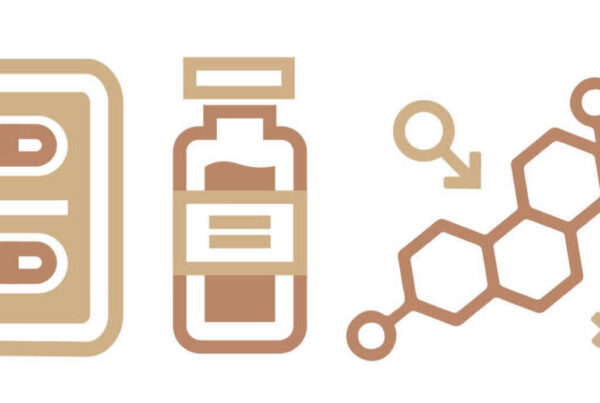Just as a plane changing altitude frequently quickly runs out of fuel, so does a person experiencing highs and lows in their hormone levels. And, just like a passenger in that plane, whose ears will feel the changing pressure, an individual experiences unpleasant symptomsproduced by the spike and plummet of hormones.
Meanwhile, they might also suffer from negative health consequences, such as high cholesterol. Maintaining steady optimal levels of testosterone is crucial to achieving maximum benefit. To accomplish this, the way a person takes testosterone should mimic as closely as possible the way the body is accustomed to processing it.
Fortunately, we know a lot about how – and when – the body produces testosterone. The primary spike of the hormone comes in the morning and it happens every day. Taking daily doses of testosterone is therefore of the utmost importance for safe and effective testosterone replacement therapy.
How Your Body Creates Testosterone
In the early morning hours, your pituitary gland releases a glycoprotein hormone called luteinizing hormone (LH). This protein is a messenger from your brain to your testicles; it calls for testosterone. LH acts on Leydig cells in the testes, which then produce testosterone. Ever wonder why you wake up in the morning with an erection? This is why! Your testosterone naturally spikes in the A.M.
Hormone Replacement Should Mimic The Body’s Cycle
There are two ways to effectively elevate your testosterone levels: bioidentical testosterone replacement and hCG, which stands for human chorionic gonadotropin. HCG is also a glycoprotein hormone and shares a similar structure to LH. It will also act upon the Leydig cells, causing them to release more testosterone. Whichever hormone therapy is right for you, it is essential to administer the hormone daily, preferably in the morning.
Unfortunately, too many people opt for weekly, biweekly or even monthly testosterone injections. This method causes a spike in the hormone, followed by continuously declining levels until the next shot, which again causes a spike. If the injection puts your testosterone levels at optimal, you may feel great for a couple of days, but then you will begin to feel the effects as they once again decline. Often times, these types of shots cause levels to go too high, in which case you may experience adverse health effects.
There Is No Replacement For Bio-identical Testosterone
Just as your testosterone schedule should mimic your body’s natural rhythm, the testosterone itself should mimic your natural hormone. Bio-identical testosterone does just that; it is structurally identical to the testosterone produced by your testes. Your body cannot tell the difference, so bio-identical testosterone acts upon all the cells in your body in the appropriate way and breaks down into metabolites that your body can process. Synthetic testosterone, on the other hand, may help you build muscle, but it can have harmful effects on your liver and other organs. When it breaks down, the metabolites are different from normal testosterone, and your body cannot deal with them through the normal pathways.
Bio-identical testosterone replacement therapy has a myriad of health benefits when administered properly. To receive maximum results, and avoid harmful peaks and valleys, testosterone must be kept steady at an optimal level. The best way to do this is to mimic your body’s natural hormone cycle by taking daily doses of bio-identical testosterone or hCG.





